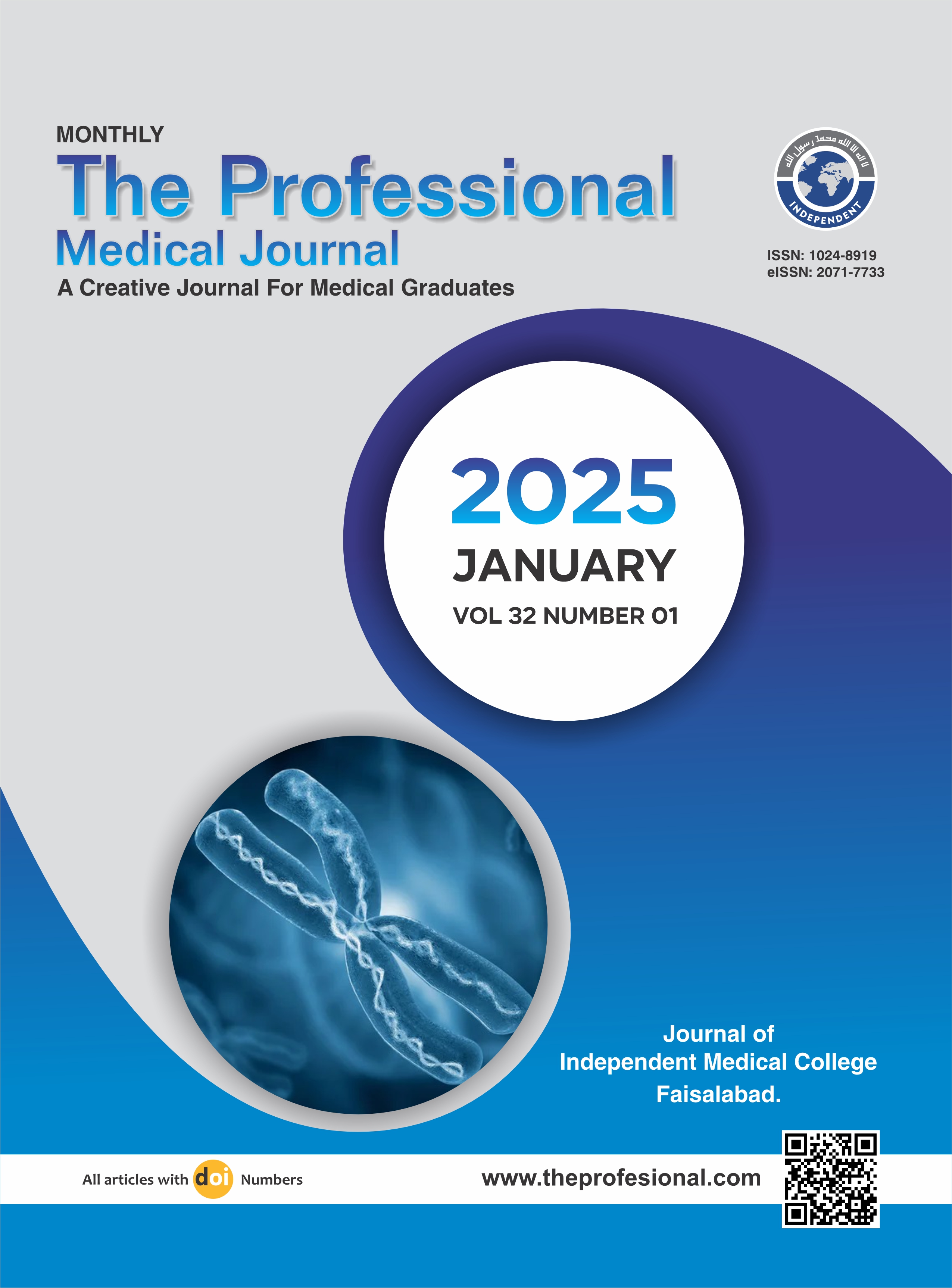Frequency of abruptio placentae in preterm premature rupture of membranes.
DOI:
https://doi.org/10.29309/TPMJ/2025.32.01.8380Keywords:
Placental Abruption, Preterm, Premature Rupture of Membranes, PROMAbstract
Objective: To determine frequency of abruptio placentae in preterm premature rupture of membranes. Study Design: Analytical Cross-sectional Description. Setting: Department of Gynecology and Obstetrics, Khyber Teaching Hospital, Peshawar. Period: April 23, 2021 to April 23, 2022. Methods: We enrolled 326 patients aged 18 to 35 years, all of whom had singleton pregnancies and presented with preterm premature rupture of membranes (PROM) that occurred less than 48 hours prior to their presentation. These assessments were conducted in both the outpatient and emergency departments to confirm instances of preterm PROM, identified by the pooling or leakage of amniotic fluid in the backside of vaginal vault or from the cervix during examination. Patient follow-up extended from their admission into the Obstetric suite until delivery. Abruptio placentae was diagnosed in cases where a normally positioned placenta separated after 28 weeks of gestation. This diagnosis was supported by ultrasound findings and clinically by symptoms such as painful abdomen during physical examination, whether bleeding per vagina is present or not (between 200 to 400 ml) and the presence of retroplacental clots post-delivery. Results: In our research of 326 patients, 35% (approximately 114 patients) were experiencing their first pregnancy (primigravida), while 65% (approximately 212 patients) had been pregnant before (multigravida). The research found that 6% of the total patients (about 20 patients) experienced placental abruption. This indicates an important correlation of preterm premature rupture of membranes and placental abruption. Regarding the gestational period, 124 patients (38%) were under 34 weeks of gestation, whereas 202 patients (62%) were over 34 weeks. The age distribution was also analyzed: 147 patients (45%) were between 18 to 25 years old, and 179 patients (55%) were between 26 to 35 years old. The average age was 31 years with A measure of variability of ± 9.74. After applying the post-stratification chi-square test, we obtained a P value of ≤0.05, indicating statistical importance. Conclusion: Preterm premature rupture of membranes is associated with a 6% risk of abruptio placentae.
Downloads
Published
Issue
Section
License
Copyright (c) 2024 The Professional Medical Journal

This work is licensed under a Creative Commons Attribution-NonCommercial 4.0 International License.


